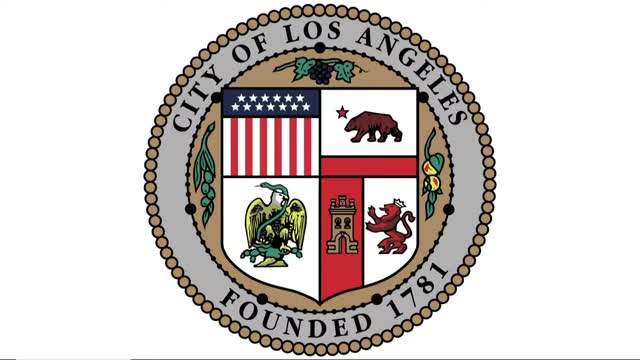Activists push for ban on toxic artificial turf in LA
June 29, 2024 | Energy and Environment Committee, City Council Committees, Los Angeles City, Los Angeles County, California

This article was created by AI summarizing key points discussed. AI makes mistakes, so for full details and context, please refer to the video of the full meeting. Please report any errors so we can fix them. Report an error »

During a recent government meeting, significant discussions emerged surrounding the proposed ban on artificial turf in Los Angeles, highlighting concerns over environmental health and public safety.
Steve Dupree, a superintendent with urban forestry, voiced strong support for the ban, citing the detrimental effects of artificial turf on the city’s tree canopy and the subsequent rise in heating bills for residents. He emphasized that the decline of trees, often unnoticed until it is too late, poses both health risks and environmental concerns.
Dr. Tom Williams from the Sierra Club raised alarms about per- and polyfluoroalkyl substances (PFAs) found in artificial turf, urging for better monitoring of sewage and drainage systems to prevent contamination of drinking water. He called for a comprehensive approach to ensure clean water access for all residents, particularly vulnerable populations.
Public comments also included a plea from a homeless individual who expressed the dire need for safe drinking water, highlighting the disparities in water quality access across different socioeconomic groups. This testimony underscored the urgency of addressing water safety as a public health issue.
Support for the ban was echoed by Terry Saucier, chair of the SoCal Stop Artificial Turf Task Force, who outlined the environmental hazards associated with artificial turf, including its contribution to pollution and biodiversity loss. Saucier argued that the material's toxicity and inability to be recycled further justify the need for a ban.
Conversely, Sean Garrity, a former chairman of the synthetic turf council, defended the use of artificial turf, citing its benefits such as reduced water usage and lower maintenance costs. He argued that synthetic turf provides equitable access to recreational spaces, particularly in underserved communities.
The meeting highlighted a growing divide between advocates for environmental health and those who see artificial turf as a practical solution for urban landscaping. As discussions continue, the implications of these debates will likely shape future policies regarding urban development and environmental sustainability in Los Angeles.
Steve Dupree, a superintendent with urban forestry, voiced strong support for the ban, citing the detrimental effects of artificial turf on the city’s tree canopy and the subsequent rise in heating bills for residents. He emphasized that the decline of trees, often unnoticed until it is too late, poses both health risks and environmental concerns.
Dr. Tom Williams from the Sierra Club raised alarms about per- and polyfluoroalkyl substances (PFAs) found in artificial turf, urging for better monitoring of sewage and drainage systems to prevent contamination of drinking water. He called for a comprehensive approach to ensure clean water access for all residents, particularly vulnerable populations.
Public comments also included a plea from a homeless individual who expressed the dire need for safe drinking water, highlighting the disparities in water quality access across different socioeconomic groups. This testimony underscored the urgency of addressing water safety as a public health issue.
Support for the ban was echoed by Terry Saucier, chair of the SoCal Stop Artificial Turf Task Force, who outlined the environmental hazards associated with artificial turf, including its contribution to pollution and biodiversity loss. Saucier argued that the material's toxicity and inability to be recycled further justify the need for a ban.
Conversely, Sean Garrity, a former chairman of the synthetic turf council, defended the use of artificial turf, citing its benefits such as reduced water usage and lower maintenance costs. He argued that synthetic turf provides equitable access to recreational spaces, particularly in underserved communities.
The meeting highlighted a growing divide between advocates for environmental health and those who see artificial turf as a practical solution for urban landscaping. As discussions continue, the implications of these debates will likely shape future policies regarding urban development and environmental sustainability in Los Angeles.
View full meeting
This article is based on a recent meeting—watch the full video and explore the complete transcript for deeper insights into the discussion.
View full meeting
